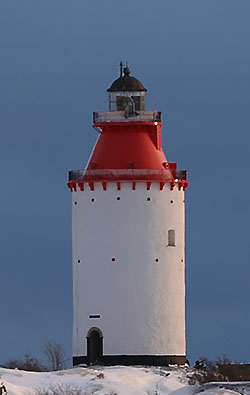|
How long it has been people staying at Landsort is uncertain, but there are data that there were fishermen from Trosa on Landsort as early as 1454.
On July 16th, 1719 were the Russians in Nynäshamn area. They came through the archipelargo from north.
The population fled away.
From Landsort they could see smoke rising up over the archipelago in north.
The fishermen from Trosa and Tälje, which was on Landsort to fish, had also made it clear for rapid evacuation.
On the evening of the 16th gave most away to Trosa, where they felt at home. Around 17-18th July was the Russians at Landsort.
A few hours after disembarkation was the island in flames from south to north.
One house was not fired up, why the house is not destroyed was that lady who lived there was with the baking of bread.
The Russians took her bread, and let her in exchange to keep the house.
For a long time had a light beacon been there, but nobody knows how it looked, only that it was built of long logs, and that it went under the name of Öja light beacon. We know that behind the rehabilitation of Amriralitetet years 1642 and additional years in 1661, it will then be described as "butt on petroleum." The butt was on the same site as the current lighthouse, it is little doubt. It burned down some time, however, about the year 1670. The mountain where it stood, was called after the "Baakberget".
In 1658, a Dutch merchant in Stockholm, Johan van der Hagen concession that out there building a beacon of stone.
Already the same year began the test by fire, and it lasted even 1659. We do not know to what extent, but in 1659 will in all cases, regular fire.
In 1666 the King commands, a BEACON of stone to be built,
and the same van der Hagen, obtain contracts for construction.
Van der Hagen did not build a lighthouse. He dies and butt burns down.
Mrs. Margareta van der Hagen was authorized to build the new lighthouse.
The fire became better in 1820. Oil lamps were used, appearances are reinforced with a number of silver mirrors.
The lighthouse was modified in 1870, on top of stone lighthouse placed the conical lighthouse, which we have become accustomed to see.
The fuel was changed to kerosene. From Paris bought the lens system to the strengthening of the light.
Lux-burner assembled around 1909 for further strengthening of the light.
In 1938 when the whole island electrified, was the same with the lighthouse.
As of July 1, 1963 the lighthouse is fully automated.
Landsort lighthouse today is Sweden's oldest (the older beacons that exist in Sweden was built in the then Denmark).
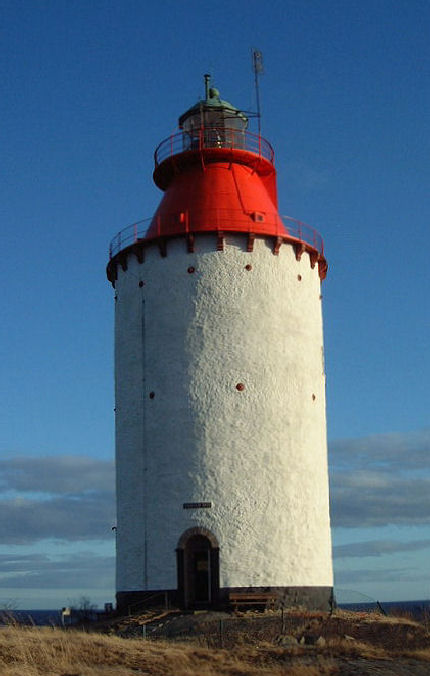
Pilot station has been here since 1535
First in the 1678 Act MARITIME LAW states that mariners were obliged to serve the pilots and that he on his own responsibility, would command ships. By Royal Resolution March 1, 1680 entrusted to Vice-Admiral Werner von Rose Felt that in coastal cities and other appointed places employ pilots.
In 1695 there were at Landsort nine pilots and four assistants.
Landsort pilot had until 1905 standby both Landsort's South and from Krokskaer. Much further back in time even from Viksten in the eastern entrance to Herrhamra trail.
1905 Krokskaer was cutting up as a pilot site and managed directly from Landsort instead.
Year 1831 was the most-29 pilots in service on Landsort, and 1986 were 16 pilots still active in Landsort.
1997 Landsort became a pilot station in Mälaren Maritime Area.
Today, there are no residents of pilots in the service of Landsort. Pilots picked up and left at Ankarudden.
Landsorts chapel is a gift of hoof foresters Helge Ax: son Johnson at Berga Castle in Vaesterhaninge. The chapel was inaugurated in 1939.
The altarpiece is made and donated by the artist Axel Sjöberg.
In the chapel are two church ships. They are there as a reminder of how Landsort's life always characterized by the ships or boats.

Landsorts chapel
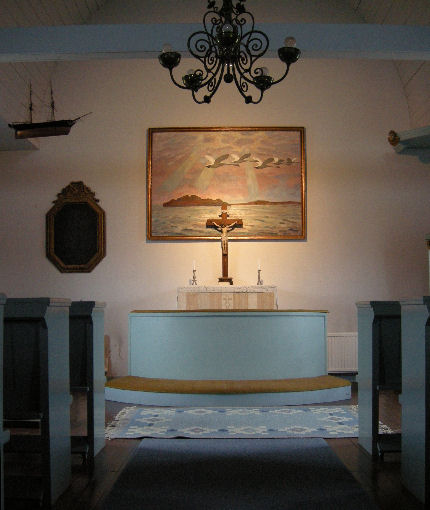
The altarpiece and a church ship
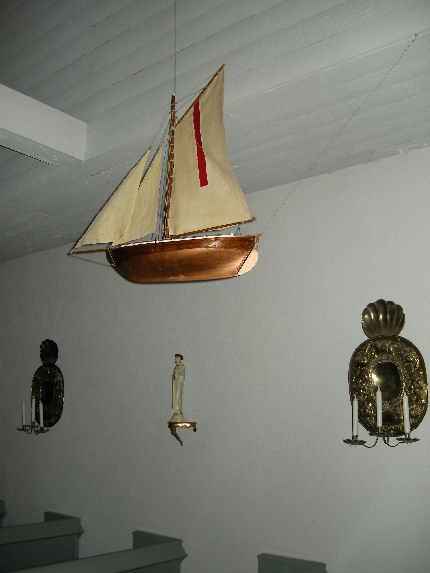
Model of the last sailing cutter at Landsort - a gift from the Swedish Maritime Administration
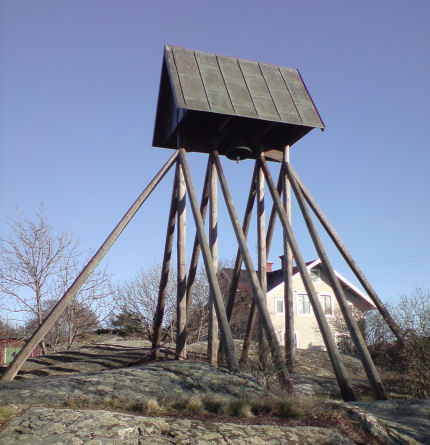
The bell tower
North of the village is plague cemetery where Johan Andersson's wife from Storhamn (village name) is buried since the year 1710.
(maze)
A small piece, about 70 m south of the plague cemetery is a maze built. How old it is but not know exactly, but the pattern is at least three thousand years old. Anyone who passed through the maze was protected against the sea's dangers and to get a good catch. It also works as fertility magical place. Most coastal mazes were built in the magical purposes and related to seasonal fisheries.
Up
|
